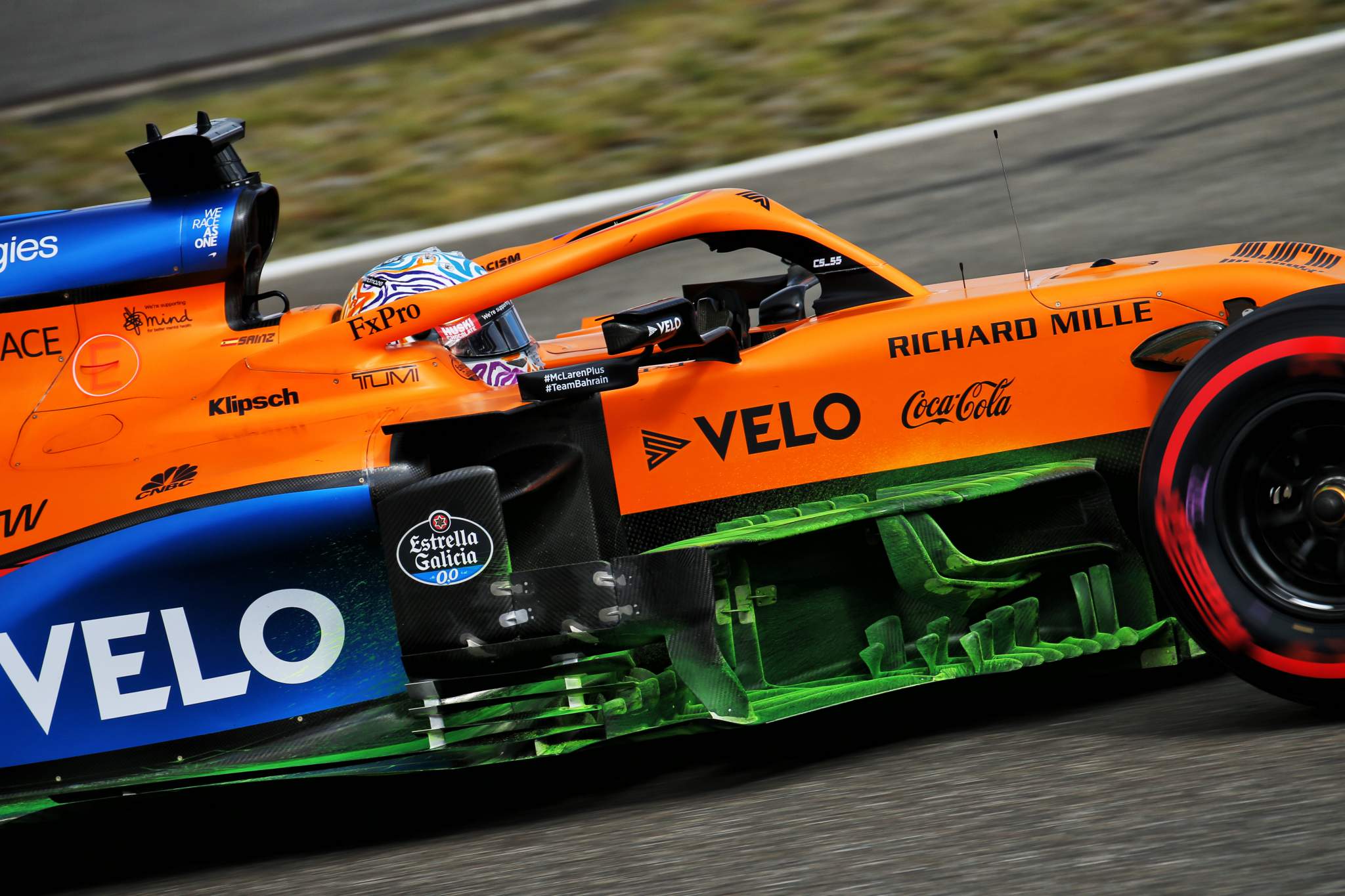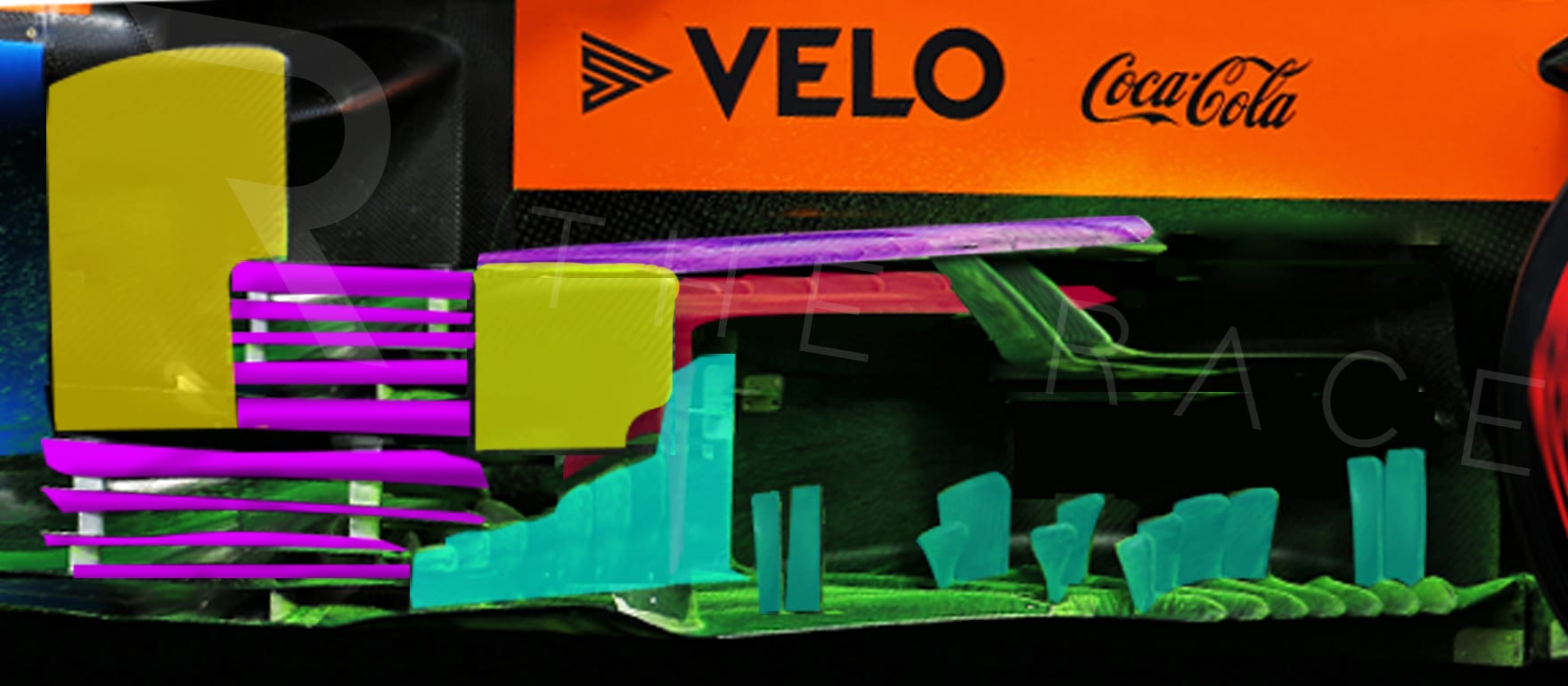Up Next

The version of McLaren’s MCL35M that made its on-track debut at Silverstone on Tuesday was a little different to the one revealed at the launch.
Most noticeable was the bargeboard package.
McLaren’s photo and videos from the test didn’t offer much detail and the team even edited a pitlane photo of the car so the bargeboards weren’t visible.
However, The Race has been able to take what detail is in the released imagery and used that data to enhance and remodel an image of last year’s bargeboards (pictured below) to give a clearer picture of how the 2021 structure appears to be shaped.

The new, less complicated outer section of the floor in the 2021 rules will lead to the teams focusing on other areas that can still give decent aerodynamic returns.
Over the last few years, the bargeboard area has been designed hand-in-hand with making the rear section of the underfloor work harder.
The vortex set up by some of the bargeboard components acted as a skirt, helping to seal the underfloor and making the diffuser much more effective. Now, most but not all of that has gone so a change of focus on how the bargeboards operate independently will be a big part of every team’s development programme.
McLaren has now got a twin delta-wing mounted off the side of the chassis, (shown in red on this year’s car, below). These are in effect upside-down wings and work in conjunction with the front suspension member to help realign the airflow coming off the front wing flaps.

This helps reduce the potential lift created as the airflow would accelerate over the top leading edge of the sidepod. This second delta wing also has some vertical upper surface turning vanes. These will help turn the airflow outwards into the ‘coke bottle’ section and will make the delta wing work harder than it would do without them.
The front corner of the underfloor works as a downforce-producing component in its own right. The turned up outer section of the floor works like a mini diffuser, pulling airflow through from the leading edge of the floor.
The regulation change that removes the louvres from the outer part of the floor further rearward means that there will be more leakage under that section of the floor, reducing the diffuser’s effect on the underfloor’s overall performance.
To counteract this, McLaren has increased the amount of horizontal louvres (in magenta, below) on this year’s car.

Last year, there were three interlinked vertical vanes to control the turbulent wake off the front tyre. Now, McLaren has two (in yellow) on this year’s car, with the centre one replaced with a horizontal louvre panel.
These horizontal louvres will make the front corner of the underfloor work harder by pulling more airflow through that section of the floor. With less mass flow being available to be pulled through by the diffuser all the way from the front of the car, this will also help the rear of the underfloor.
Most of the other turning vanes are also a little larger or more aggressive. McLaren has also added a couple of standalone vertical vanes at the trailing edge of the outboard end of the lower delta wing section (in cyan, above).
Basically, the leakage under the floor sides in front of the rear tyre will still be the same, but this leakage will now become a larger percentage of the airflow that the diffuser has to work with. This is because the new developments to the bargeboards focus on making the front section of the floor scavenge more of the airflow from underneath the car.
This is an area that will be in constant development as the season progresses. It will be interesting to see how others have attacked the detail of these components.



